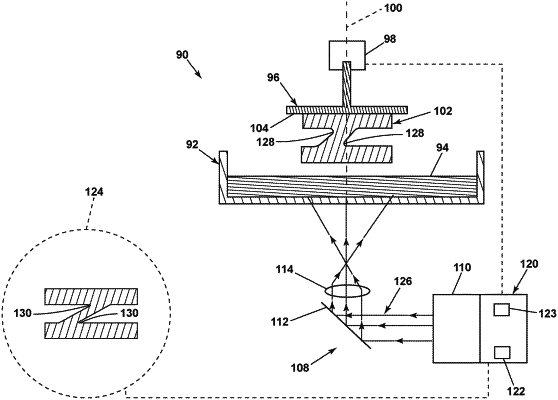| CPC G05B 19/4099 (2013.01) [B29C 64/393 (2017.08); G06F 30/10 (2020.01); G05B 2219/35036 (2013.01); G05B 2219/35134 (2013.01); G05B 2219/49007 (2013.01)] | 19 Claims |

|
1. A method of forming a component from an original model, the method comprising:
identifying an acute angle defined by a gap between a first surface and a second surface of the original model, wherein the original model is a virtual model;
compensating the original model to create a compensated model, wherein the compensating includes removing a portion of the original model from one or more of the first surface or the second surface at the acute angle to form a compensated angle, wherein the compensated angle is included in the compensated model, the compensated model comprising:
a first negative print region at the first surface, wherein the first negative print region is defined by at least a first inset wall and a second inset wall of the first surface, wherein an intersection of the first inset wall and the second inset wall of the first surface defines a non-zero angle spaced from the compensated angle, and wherein the compensated angle is defined by a portion of the first inset wall of the first surface; or
a second negative print region at the second surface, wherein the second negative print region includes at least a first inset wall and a second inset wall of the second surface, wherein an intersection of the first inset wall and the second inset wall of the second surface defines a non-zero angle spaced from the compensated angle, and wherein the compensated angle is defined by a portion of the first inset wall of the second surface; and
forming the component, after creating the compensated model, by additive manufacturing, the component based upon the compensated model such that a final model of the component, having a final angle, is more alike the original model than the compensated model due to distortions during forming of the component.
|